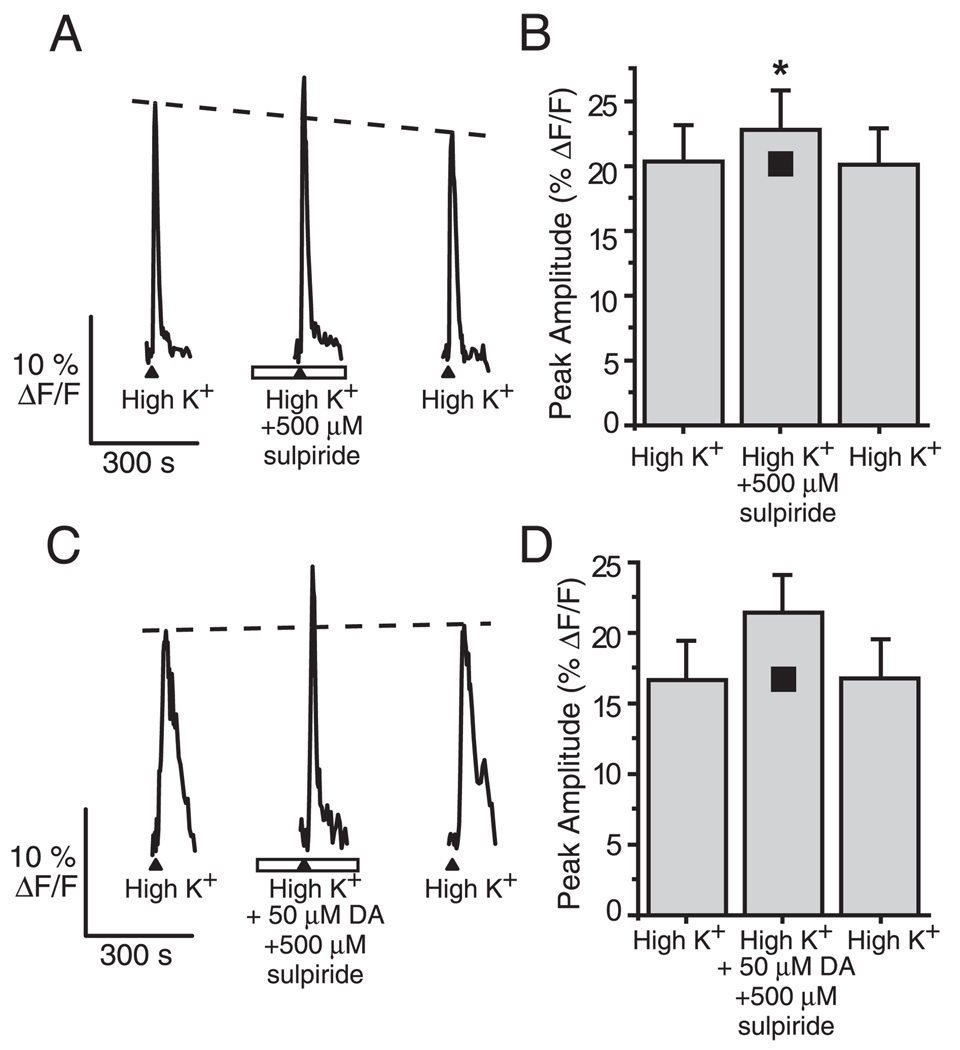FIG. 5.
D2 dopamine receptor activation reduces high-K+-evoked Ca2+ transients. A and C: representative 100 mM K+-evoked Ca2+ transients in the presence of 500 µM sulpiride or dopamine + sulpiride. ORNs were exposed to dopamine and sulpiride for 5 min prior to high-K+ superfusion. - - -, linear regressions on the peak amplitudes of the 1st and 3rd calcium transients. B and D: average peak Ca2+ transient amplitudes are shown (means ± SE) as are the predicted peak amplitudes for the 2nd application (■). n = 19 cells/3 slices and 10 cells/2 slices, respectively. *P < 0.05, paired Student’s t-test on predicted vs. observed values. Sulpiride prevented both basal and exogenous dopamine reductions in high-K+-induced Ca2+ transients.

